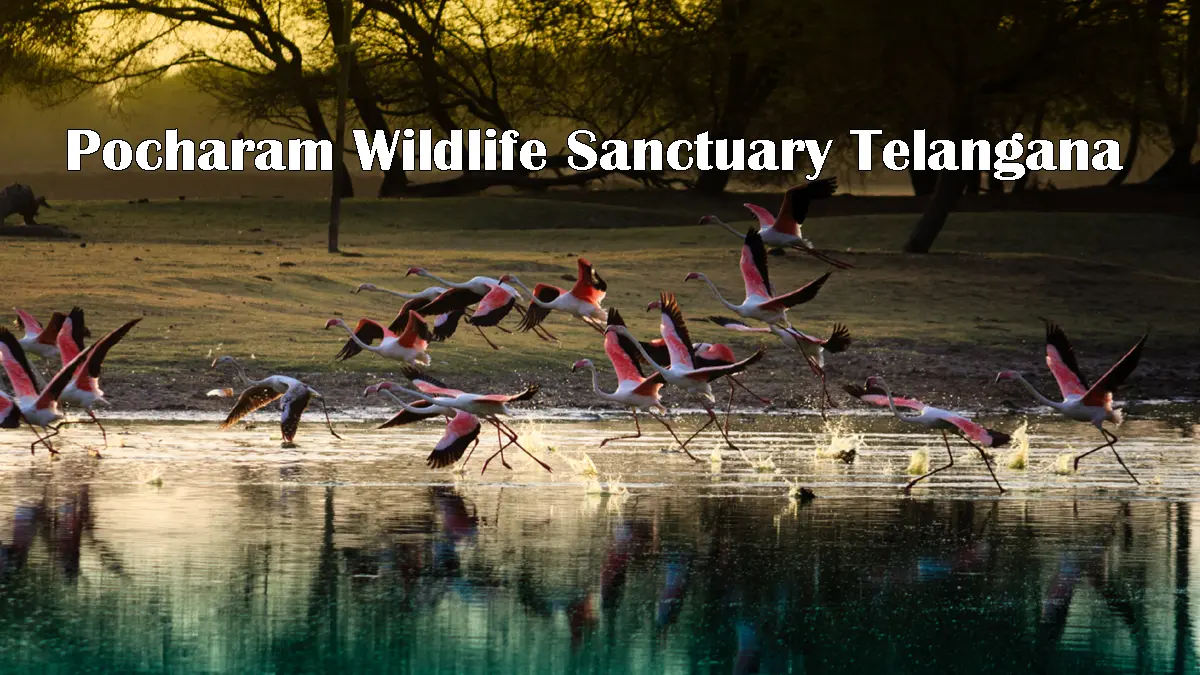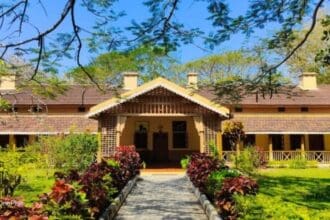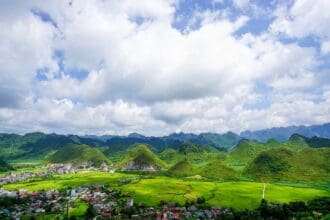Nestled in the northeastern state of Assam, Kamalpur is a quaint town that often escapes the spotlight but holds immense charm for travelers seeking an authentic experience of rural India. Known for its lush greenery, serene landscapes, and vibrant culture, Kamalpur offers a perfect blend of nature, history, and spirituality. Whether you’re a nature enthusiast, a history buff, or someone looking for a peaceful retreat, Kamalpur has something unique to offer. In this article, we will explore the top 5 places to visit in Kamalpur , providing you with detailed insights into each destination, ensuring your trip is both enriching and unforgettable.
1. Dudhnoi River: A Serene Escape Amidst Nature
The Dudhnoi River , flowing gracefully through Kamalpur, is one of the town’s most picturesque attractions. This tranquil waterway serves as a lifeline for the local community, supporting agriculture, fishing, and daily life. For visitors, it offers a serene escape into nature’s embrace.
Why Visit Dudhnoi River?
- Natural Beauty : The river is surrounded by lush greenery, making it an ideal spot for picnics, birdwatching, and photography.
- Cultural Significance : The Dudhnoi River plays a vital role in the lives of locals, who use it for irrigation, fishing, and religious rituals.
- Adventure Activities : Visitors can enjoy boating and fishing, adding an element of adventure to their trip.
What to Expect During Your Visit
As you approach the Dudhnoi River, you’ll be greeted by the soothing sound of flowing water and the sight of verdant banks dotted with trees. Early mornings are particularly magical, as mist rises from the river, creating a dreamlike atmosphere. Locals can often be seen washing clothes, bathing cattle, or performing rituals along the riverbank.
For those who love birdwatching, the area around the river is home to a variety of avian species, including kingfishers, herons, and egrets. Bring along a pair of binoculars to spot these colorful birds in their natural habitat.
“The Dudhnoi River is a lifeline of Kamalpur, weaving together nature, culture, and livelihood.”
Tips for Visitors
- Carry sunscreen and a hat to protect against the sun.
- Respect the privacy of locals using the river for daily activities.
- Avoid littering; take all trash back with you to preserve the river’s pristine condition.
Detailed Exploration of Dudhnoi River
The Dudhnoi River originates in the hills of Meghalaya and flows through several districts of Assam before merging with larger rivers. Its crystal-clear waters and gentle flow make it a favorite among anglers and nature lovers. Along the riverbanks, you’ll find small shrines and temples where devotees offer prayers, especially during festivals like Bihu.
For families, the river offers a perfect setting for a day-long picnic. Many locals bring mats, snacks, and musical instruments to spend quality time with loved ones. If you’re lucky, you might even catch a traditional folk performance by villagers celebrating a special occasion.
2. Kamalpur Railway Station: A Gateway to Northeast India
While not a conventional tourist attraction, the Kamalpur Railway Station holds historical significance as a key transit point connecting Assam to other parts of Northeast India. Established during British colonial rule, the station has witnessed decades of change and development in the region.
Why Choose Kamalpur Railway Station?
- Historical Importance : The station played a crucial role in the economic growth of Kamalpur and surrounding areas during the colonial era.
- Architectural Charm : Though modest, the station building reflects old-world charm with its vintage design and wooden benches.
- Transport Hub : It serves as a convenient starting point for exploring nearby towns and villages.
Exploring the Station
Upon arriving at Kamalpur Railway Station, you’ll notice its simple yet functional architecture. The platform is lined with trees, providing shade to waiting passengers. Inside the station, vintage signage and ticket counters evoke nostalgia for a bygone era.
For train enthusiasts, the station offers opportunities to observe the daily hustle and bustle of rail travel in rural India. Trains passing through Kamalpur connect major cities like Guwahati, Shillong, and Agartala, making it a vital link in the region’s transportation network.
“Kamalpur Railway Station is more than just a stop—it’s a gateway to the heart of Northeast India.”
Visitor Guidelines
- Arrive early if you plan to board a train, as schedules may vary due to weather or maintenance.
- Be mindful of personal belongings, especially during peak hours when crowds gather.
- Engage with locals to learn about the station’s history and its role in the community.
Detailed Exploration of Kamalpur Railway Station
The Kamalpur Railway Station was built in the early 20th century as part of efforts to improve connectivity in Assam. Over the years, it has undergone renovations but retains much of its original character. Wooden beams, iron railings, and hand-painted signs add to its rustic appeal.
For photographers, capturing candid moments of passengers boarding trains or vendors selling snacks on the platform can yield fascinating images. Additionally, the station’s proximity to the Dudhnoi River makes it a convenient base for exploring Kamalpur’s natural attractions.
3. Deo Hills: A Trekker’s Paradise
Located near Kamalpur, the Deo Hills are a popular destination for trekkers and nature lovers. These rolling hills are covered in dense forests, offering breathtaking views and a chance to reconnect with nature.
Why Visit Deo Hills?
- Scenic Beauty : The hills are blanketed in lush greenery, with panoramic vistas of the surrounding valleys and plains.
- Trekking Opportunities : Several trails wind through the hills, catering to both beginners and experienced hikers.
- Wildlife Spotting : The forested areas are home to diverse flora and fauna, including deer, monkeys, and various bird species.
Experiencing the Hills
A trek up the Deo Hills begins with a gradual ascent through thick foliage, where sunlight filters through the canopy, creating dappled patterns on the ground. As you climb higher, the landscape opens up, revealing sweeping views of Kamalpur and beyond.
One of the highlights of the trek is reaching the summit, where a small temple dedicated to Lord Shiva awaits. Pilgrims often visit this shrine during festivals, adding a spiritual dimension to the experience.
“Deo Hills are a sanctuary for adventurers, offering solitude amidst untouched wilderness.”
Essential Tips
- Wear sturdy shoes and carry sufficient water and snacks for the trek.
- Start early in the morning to avoid the heat and maximize daylight hours.
- Hire a local guide if you’re unfamiliar with the trails to ensure safety.
Detailed Exploration of Deo Hills
The Deo Hills span over 10 square kilometers and are part of a larger range that stretches across western Assam. The terrain varies from gentle slopes to steep inclines, providing challenges for trekkers of all skill levels. Along the way, you’ll encounter streams, waterfalls, and rocky outcrops, each offering unique photo opportunities.
For wildlife enthusiasts, the hills are a haven for spotting rare species like the Hoolock gibbon and Indian pangolin. Birdwatchers will delight in identifying migratory birds such as bar-headed geese and Siberian cranes, which flock to the region during winter months.
4. Kamalpur Market: A Vibrant Hub of Local Culture
No visit to Kamalpur is complete without exploring its bustling local market , which serves as the heartbeat of the town. From fresh produce to handmade crafts, the market offers a glimpse into the everyday life of Kamalpur’s residents.
Why Visit Kamalpur Market?
- Cultural Immersion : The market is a melting pot of cultures, where people from different communities come together to trade goods and share stories.
- Local Delicacies : Sample authentic Assamese dishes like pitha (rice cakes) and khar (alkaline curry) prepared by street vendors.
- Shopping Opportunities : Purchase traditional handicrafts, textiles, and spices to take home as souvenirs.
Exploring the Market
As you wander through Kamalpur Market, you’ll be greeted by the aroma of freshly brewed tea and sizzling snacks. Stalls overflow with seasonal fruits, vegetables, and herbs, while artisans display intricately woven fabrics and bamboo products.
One of the standout features of the market is its vibrant energy, with vendors calling out to attract customers and children playing between stalls. Don’t miss the chance to interact with locals, who are always eager to share their knowledge about the region’s customs and traditions.
“Kamalpur Market is a kaleidoscope of colors, flavors, and sounds—a true reflection of Assam’s rich heritage.”
Visitor Guidelines
- Bargain politely when purchasing items, as haggling is a common practice.
- Try local delicacies but ensure they are prepared hygienically.
- Be respectful of cultural norms, especially when interacting with women or elderly vendors.
Detailed Exploration of Kamalpur Market
The market operates daily, with peak hours occurring in the morning and late afternoon. It is divided into sections based on the type of goods sold, such as fresh produce, clothing, and household items. On weekends, the market expands to include additional stalls selling jewelry, toys, and decorative items.
For food lovers, the market is a paradise. Street food vendors serve piping hot momos (dumplings), jhal-muri (spiced puffed rice), and litti-chokha (baked dough balls with mashed vegetables). Wash it all down with a cup of laal sah (red tea), a local specialty known for its robust flavor.
5. Surya Pahar: A Spiritual and Archaeological Marvel
Located approximately 20 kilometers from Kamalpur, Surya Pahar is an ancient archaeological site that combines spirituality with historical intrigue. Believed to have been a center of worship for multiple religions, the site features remnants of Hindu, Buddhist, and Jain structures.
Why Visit Surya Pahar?
- Religious Diversity : The site showcases the coexistence of Hinduism, Buddhism, and Jainism, reflecting the region’s inclusive spirit.
- Archaeological Discoveries : Excavations have unearthed statues, inscriptions, and artifacts that shed light on the area’s past.
- Spiritual Experience : Pilgrims believe that visiting Surya Pahar brings blessings and good fortune.
Exploring the Site
Upon entering Surya Pahar, you’ll notice a series of rock-cut caves, stupas, and temples scattered across the hillside. One of the most prominent features is a large stone slab engraved with depictions of the Sun God, believed to have been worshipped by ancient inhabitants.
Another highlight is the presence of votive stupas, which were used by Buddhist monks for meditation and prayer. Nearby, Jain carvings depict Tirthankaras, underscoring the site’s importance as a multi-religious hub.
“Surya Pahar is a testament to humanity’s shared quest for meaning and connection.”
Essential Tips
- Dress modestly and remove shoes before entering sacred areas.
- Hire a guide to gain deeper insights into the site’s historical and cultural significance.
- Visit during sunrise or sunset for stunning views of the surrounding landscape.
Detailed Exploration of Surya Pahar
Surya Pahar spans over five acres and is divided into distinct zones, each dedicated to a specific religion. For instance, the eastern section contains Hindu temples adorned with carvings of deities like Vishnu and Shiva, while the western section houses Buddhist monasteries and meditation halls.
For history buffs, the site’s inscriptions are particularly noteworthy. Written in Sanskrit and Prakrit, they provide valuable information about the rulers, merchants, and artisans who contributed to its construction. Archaeologists continue to study these findings, hoping to uncover more about the region’s role in shaping ancient Indian civilization.
Conclusion: Why Kamalpur Should Be on Your Travel Bucket List
Kamalpur, though modest in size, is a destination brimming with charm and character. From the tranquil waters of the Dudhnoi River to the rugged beauty of the Deo Hills , each attraction offers a unique perspective on the region’s culture and heritage. Whether you’re exploring ancient ruins, immersing yourself in local markets, or simply soaking in the serenity of nature, Kamalpur promises memories that will linger long after your journey ends.
“Kamalpur is a canvas painted with the colors of simplicity, tradition, and natural beauty—a masterpiece waiting to be discovered.”
FAQs About Visiting Kamalpur
- What is the best time to visit Kamalpur?
- The ideal time to visit is between October and March when the weather is pleasant and conducive to outdoor activities.
- How do I reach Kamalpur?
- Kamalpur is well-connected by road and rail. The nearest airport is in Guwahati, approximately 200 kilometers away.
- Are there any local delicacies to try in Kamalpur?
- Yes, don’t miss out on dishes like pitha , khar , and litti-chokha . Street food vendors and local restaurants serve authentic Assamese cuisine.
- Is Kamalpur safe for solo travelers?
- Absolutely! Kamalpur is considered a safe destination, though basic precautions should always be followed.
- Can I visit Deo Hills alone?
- While possible, it’s recommended to hire a guide for a safer and more informative experience.
- Are there accommodations near Dudhnoi River?
- Yes, budget hotels and guesthouses are available in Kamalpur town, approximately 5 kilometers away.
- What should I wear when visiting Surya Pahar?
- Opt for modest attire covering shoulders and knees. Lightweight fabrics like cotton are ideal for comfort.
- Do I need prior permission to visit Surya Pahar?
- No, but inform local authorities if you plan to camp overnight near the site.
- Are pets allowed in Kamalpur Market?
- Pets are generally not allowed inside the market to maintain hygiene and order.
- What languages are spoken in Kamalpur?
- Assamese and Hindi are widely spoken, though English is understood in tourist areas and hotels.














